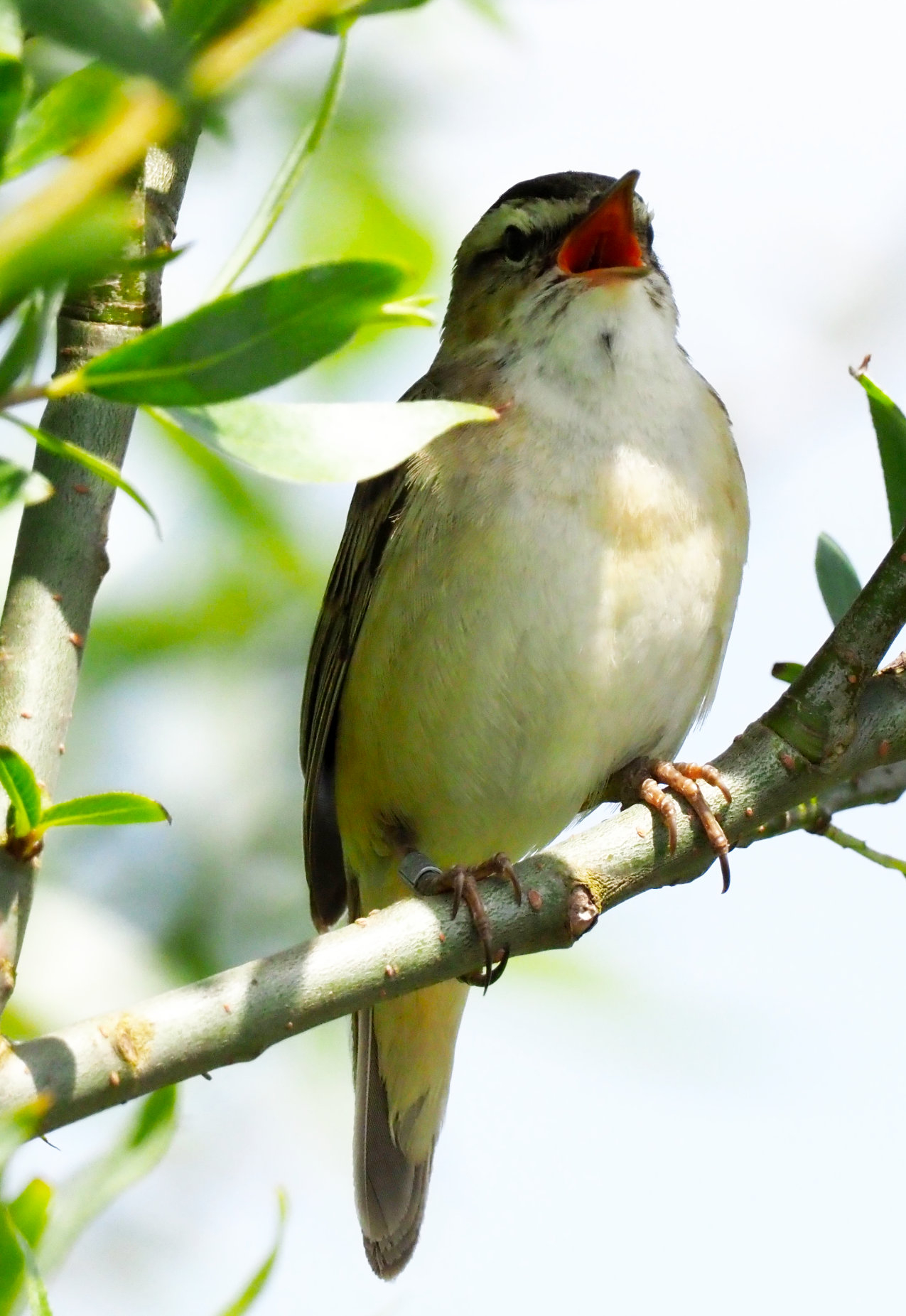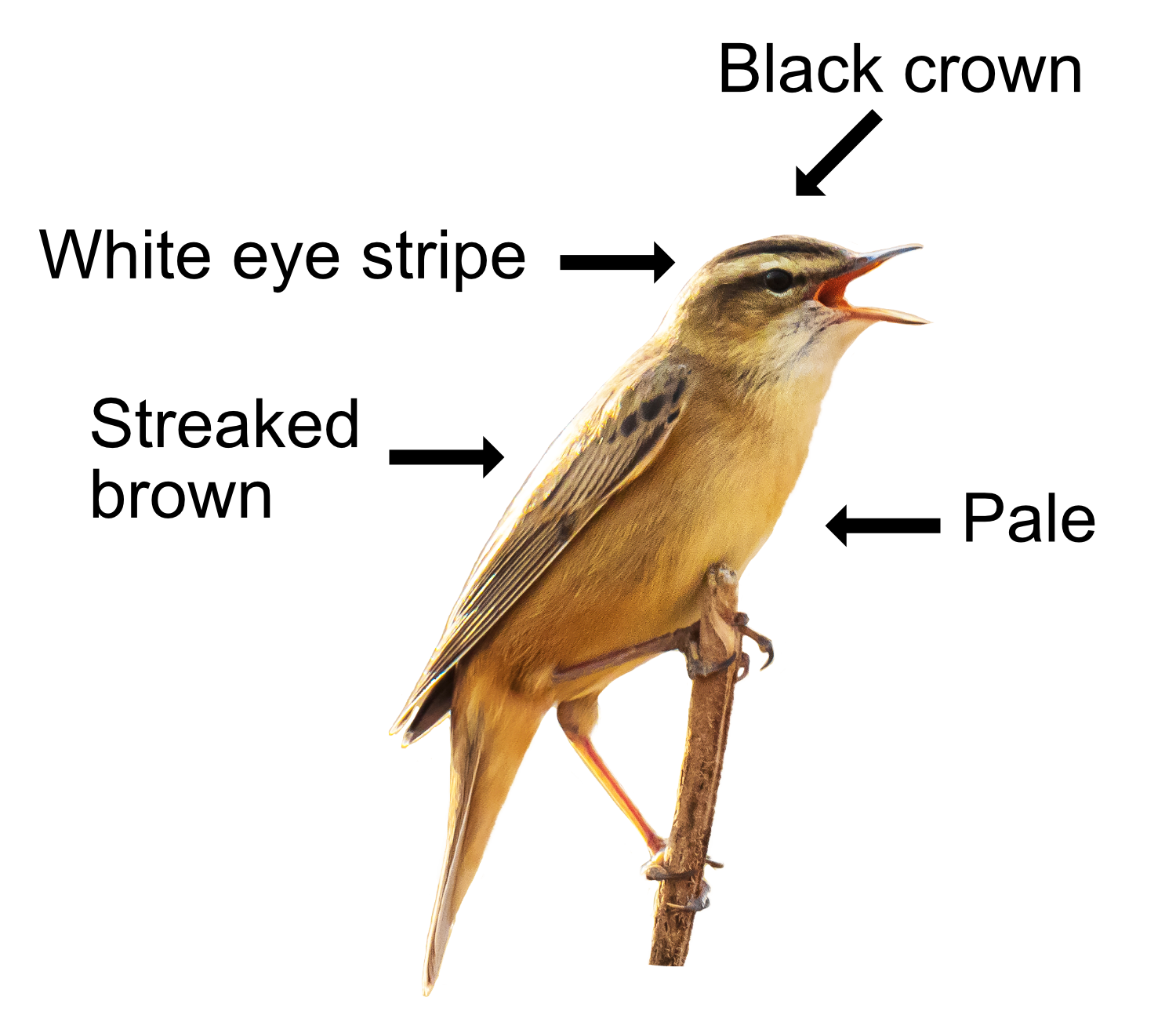
The Sedge Warbler is a summer visitor that loves to hide in thick vegetation or reedbeds near rivers and lakes. They arrive in April and return to Africa in the autumn making an awesome 4,000km non-stop flight across Europe, the Mediterranean Ocean and the Sahara Desert.
It is smaller than a House Sparrow with streaked upperparts, pale underparts, a black crown, and a prominent white eyebrow stripe. Its yellowish-brown rump is visible in flight. Youngsters are like mum and dad but yellower. The Sedge Warbler's song is very similar to a Reed Warbler's but you can tell the two apart as the Sedge Warbler's song is more jazzy, fast-flowing and off-beat, often sung from the sky or a high perch. They sing a mix of harsh churring and sweeter notes with each verse in a different rhythm, often singing non-stop for a minute or two.

Sedge Warblers chiefly feed on insects like flies, beetles, and spiders. They will also eat snails, worms and the occasional berry in autumn. They find most of their food low down in the vegetation. Their feeding techniques include 'picking' insects from underneath leaves, while perched or hovering, and 'leap-catching', where they grab an insect as it flies past. They cleverly take advantage of the low temperatures around dusk and dawn when their prey is less mobile. They have a big feed up before their epic migration, doubling their body weight.
The best breeding territories are grabbed by the earliest arriving males, who then sing to attract a female, never singing the same song twice, adding new riffs to impress the jazz-cat girls. The Sedge Warbler finishes singing as soon as he has a mate. The music struck mum then builds a nest from a cup of grasses, moss and spiders' webs lined with soft hair and plant down. It is woven around plant stems off the ground. She lays 5-6 eggs in May and incubates them until they hatch 13 days later. Both parents feed the young. The youngsters can fly after 13 days. With that fast turnaround, there are often two broods. The family then moves to pre-migration areas to bulk up. Mum and dad do a partial moult, then set off ahead of the kids and finish moulting once back in Africa.
Sedge Warblers suffered a large decline in the 1970s and 1980s because of droughts in Africa but their numbers are now recovering. It goes to show that everything, not just people, suffers in a drought. About 300,000 pairs breed in Britain and their breeding success depends on good wetlands and marshes. The oldest ringed Sedge Warbler was 8 years old.
Their Latin name is 'acrocephalus schoenobaenus' where 'acrocephalus' is from the Ancient Greek 'akros' for 'highest' and 'kephale' for 'head'. The people naming it actually meant 'sharp-pointed head' but got their Greek a bit mixed up. The 'schoenobaenus' is from Ancient Greek 'skhoinos' for 'reed' and 'baino' 'to tread'. Reed walker is a lot better. The Sedge Warbler is closely related to the similar-looking Aquatic Warbler found in Poland and Russia, which occasionally passes through on its own way to Africa. The English name comes from its singing in the sedge (grasses and rushes). Another local name is the 'sedge reedling'.